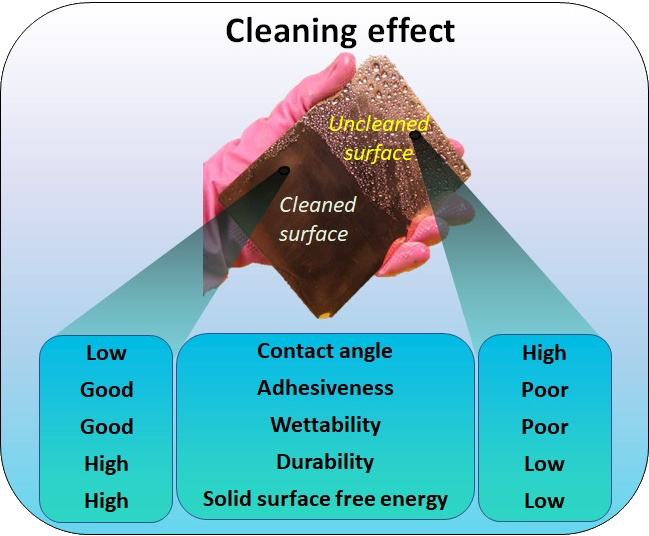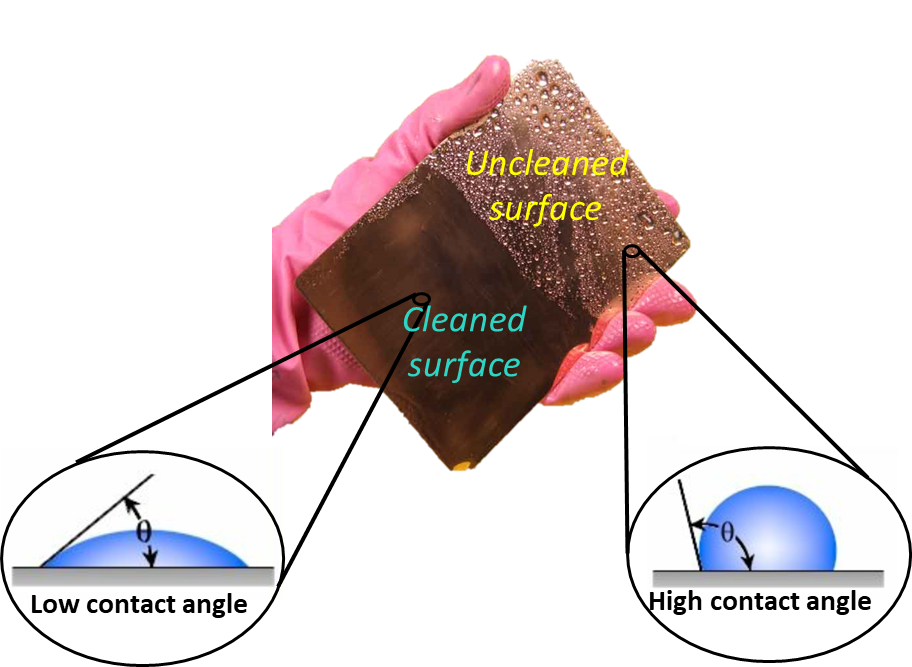Importance Of Surface Cleaning For Electrodeposition
Kanopy Techno Solutions
Importance of surface cleaning for electrodeposition
Posted on May 18, 2021, 1:45 p.m. by electrochemical.expert@kanopytech.com

Cleaning of a surface is an important aspect in electroplating industry as a sound foundation ensures proper appearance, adhesion, and acceptance of the final product. It is one of the most indispensable considerations prior to electroplating to procure a clean surface. The physical and chemical nature of a metallic surface has a binding effect on the nature of the metal to be electrodeposited. The presence of external contaminants (e.g., oil, grease, dirt, corrosion products etc.) negatively impact the adhesion property, continuity, and durability of electroplated materials because cleaning of a surface via physical, chemical or mechanical means increases the surface energy of the substrate. The term ‘cleaning’ can have different interpretations for different communities however, broadly it signifies the removal of unwanted or undesired materials from a surface of interest. A more precise definition of cleaning states “containing no contaminants that would interfere with satisfactory deposition of one adhering finish” [1]. Electrodeposition is generally a complex phenomenon and involves several steps. Therefore, it is hard to trace the origin of anomaly. Mostly improper and incomplete cleaning leads to undesired electroplating, hence, cleaning step can be subject of scrutiny. Topics of scrutiny can be water breaks, etching, smuts, stains, and aberration in appearance. Another important aspect of cleaning process is that it must not chemically or physically alter the composition of a particular surface. In order to accomplish adequate cleaning, following steps should be performed [2]:
- Primary cleaning: (usage of alkaline spray, emulsion, or solvent) to remove soil in bulk amounts. This step is targeted towards removal of bulk excess of soil. It also aids in reduction of viscosity of heavy oils and waxes to augment the efficiency of following stages.
- Secondary cleaning: This is the secondary step post primary cleaning targeted towards removal of softened soil and solvent residues as a result of primary cleaning. Alkaline cleaning can be segregated into spray alkaline cleaning, soak alkaline cleaning and barrel alkaline cleaning.
- Electrocleaning: This step is resorted to get rid of trace impurities and recalcitrant adherent solids. In this step the substrate of interest is assumed as an electrode and subjected to electric current in an electrolytic bath. Two widely used methods of electrocleaning are cathodic cleaning and anodic cleaning but recalcitrant materials can be subjected to Periodic Reverse (PR) Current Cleaning. Cyclic voltammetry technique is a good means of achieving this with both cathodic and anodic sweep.
Depending upon the number of impurities, these stages can be fine-tuned. For instance, with light soils, it is a norm to conduct the extensive multistage cleaning to achieve desired electroplating.
The degree of cleaning can be evaluated with the aid of certain characterization techniques such as Radio Isotopes, UV Fluorescence, X Ray Fluorescence, Atomizer Test, Evaporative Rate Analysis, Conductivity Method, Electrochemical Measurements and so on [3]. Practically “water break free” surface is hailed as an acceptable surface where the surface of interest is smeared with water and the water does not form any droplets. For a perfectly clean surface, the contact angle is zero whereas a contaminated surface exhibits contact angle of 90° or more [4]. Despite a myriad of characterization techniques and practical observations the ultimate test is a desired finish.
Surface cleaning can be accomplished via steps discussed above but the scientific community always strives to apply cutting edge technology. Any domain of science is subject to continuous research and development and surface pretreatment has also witnessed application of state-of-the-art techniques. Another important consideration of the present scientific community is a shift towards greener approach and apply principles of green chemistry in almost every spheres of chemistry. Traditional surface pretreatment involves usage of very caustic substances such as alkaline solutions which are not environmentally benign. Hence emerging methods such as supercritical carbon dioxide treatment, plasma treatment, microbial cleaning technology, ionic liquid treatment, sonic technology and laser treatments are widely applied as a means of shift towards greener methods [5].
Reference:
(3) Mandich, N. Surface Preparation of Metals Prior to Plating. I: Metal Finishing 2003, 101, 8-10.

Share this post!
© KANOPY. All rights reserved.